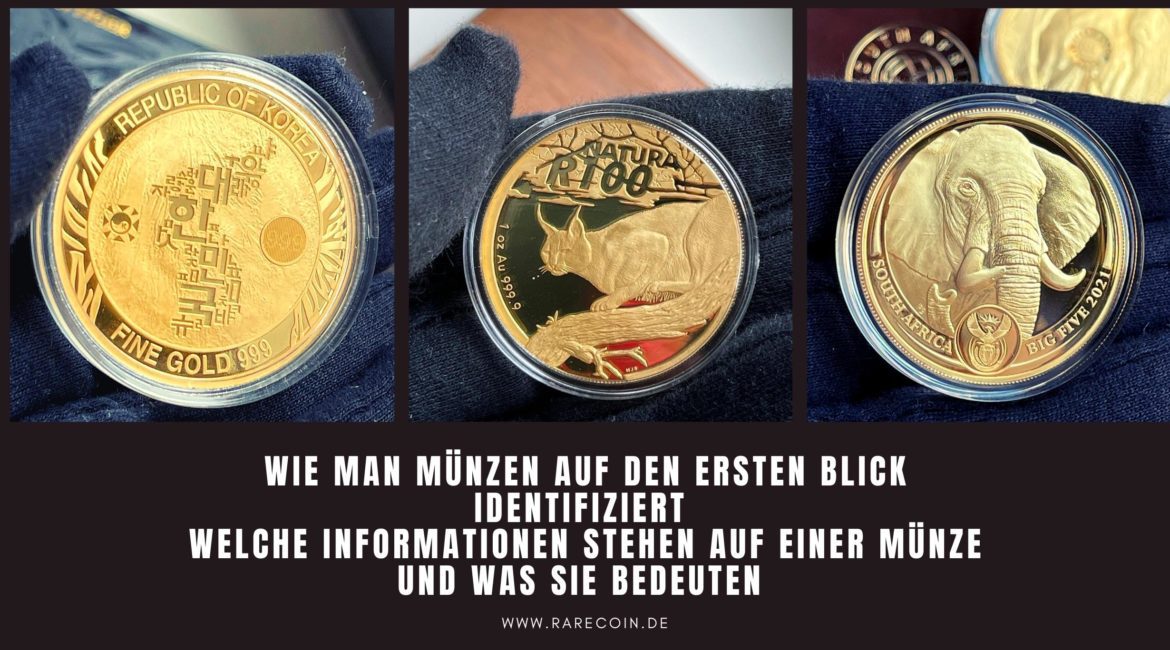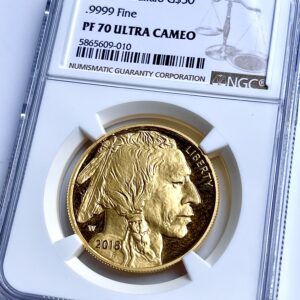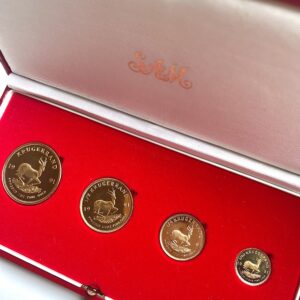You have probably heard of obverse or reverse of a coin. However, there is much more to consider. Now, what are these terms and what exactly do they mean? In the following blog, we will take a closer look at each element of the coin design with you.
Front/Averse vs. Back/Reverse
The reverse (abbr.: reverse), also known as the value side , is the back (abbr.: reverse) of a coin in numismatics. The obverse is called the obverse.
Which side of the coin is the obverse?
What is the obverse (“avers”) or the reverse (“revers”) of a coin is not always very easy to determine.
Sometimes there are deviations. as in the case of euro circulation coins, for example. Here, in official documents, the value side is called “common European obverse”, while for collectors and coin catalogs, the national side is “obverse”. The other side would be the reverse. As you can see, such deviations can cause misunderstandings and that is why today many people talk about “image side” and “value side”.
Briefly summarized: If a national emblem (for example, national coat of arms, country, ruler, etc.) is depicted, it is the obverse = front. The other side is then the reverse = back.
In English, the front is also called “heads” and the back “tails”.
Heads, or translated to “head side” in German, is a good mnemonic because the obverse (avers) usually has a head or face on it. This is usually a portrait of a head of state (examples: Kangaroo at Sunset 2017 10 years RAM Australia 1oz Gold with the Queen Elizabeth, Krugerrand 1 oz Vintage 1967 Gold Proof PP SA Mint – Paul Kruger, then President of South Africa (1883 to 1902)) or for a symbolic representation of the country / continent.
Sometimes there is no person depicted on the obverse at all. In these cases, you can usually tell which side should be the front by looking at the date.
Which side of the coin is the reverse (in English “tails”)?
The reverse of the coin is called the lapel or in English “tails”. It usually shows the name of the country that issued the coin.
Again, there is no single rule for which side of the coin is obverse or reverse. Sometimes you can even find a person’s face on the reverse of a coin.
For obvious reasons, the obverse (avers), as mentioned above, with the portrait is commonly referred to as “heads = head”. The other side (reverse) is called “tails = tail”, simply because the tail is at the other end of the animal than the head.
Definitions of the various elements on coins
Field: the smooth background surface of a coin. The field is the empty space between other features on the coin.
Edge: the area along the thickness of the coin, sometimes referred to as the “third side” of the coin. Often confused with the Rim.
Rim elevation: the elevated area along the edge of the coin. Edges protect the coin image from excessive wear and make it easier to stack coins.
Inscriptions: any words or writing on the coin.
Legend: the main inscription on a coin.
Motto (slogan): any national- or culture-specific inscription on a coin, e.g., “Save Our World,” “Big Five,” “Nautical Ounce.”
Mint mark of the mint (Mint Mark): Letters or symbols indicating the place where the coin was made. For example, Russian coins are minted either at the Moscow Mint (Moscow Monetnij Dvor = MMD) or SPMD (St. Petersburg Monetnij Dvor = St.Petersburg Mint).
Face value or coin’s denomination: The value of a coin as legal tender, e.g., the face value of a five-cent piece is five cents. This is also called the nominal value of a coin.
Year-date: The date the coin was issued by a government agency.
Coins with special surface treatments
Some silver coins and gold coins – especially those made for collectors – have special surface treatments. These finishes help to highlight or enhance the beauty of the coin design.
The standard design of today’s coins is Brilliant Uncirculated, abbreviated “BU”. This is the normal, shiny finish that many of us have come to expect on coins. The “Brilliant Uncirculated” finish gives the coin an attractive luster.
A proof version (in German PP = Polished Plate) is particularly popular with collector coins. Proof coins are characterized by specially polished fields that have a mirror-like appearance. The reliefs stand out from this reflective background because they are “frosted”. How such a coin looks, you can see here: Krugerrand 1 oz Vintage 1967 Gold Proof PP SA Mint
In addition to proof and BU coins, mints around the world have developed other eye-pleasing finishes for certain special issues. These include colorized coins (colorized coins), reverse proof coins (Libertad Gold Coin 2021 Reverse Proof 1 oz Mexico) (reverse proof coins), and other forms of enhanced uncirculated surfaces (sometimes called sandblasted or satin proofs).
The difference between circulated and uncirculated coins
The main difference between the two types of coins is usually easy to determine, and the difference in value can often be significant. Each coin begins its life as uncirculated when it is minted at the mint, and it remains in the uncirculated state until it enters the stream of commerce or is otherwise damaged.
Uncirculated coins
To be certified as uncirculated, a coin must not show any traces of circulation.
There are two important factors that indicate a coin is uncirculated:
Coin luster: Co ins that have never been in circulation usually have a pronounced luster or shimmer. The luster wears off very quickly once the coin is in circulation and has been touched with bare hands. It can also decrease with time.
No Signs of Wear: One of the most obvious signs that a coin is uncirculated is the lack of any signs of wear. As soon as the coin enters circulation, the high points show signs of wear.
Different grades for uncirculated coins
Uncirculated coins are graded between MS60 (MS = Mint State) and MS70. Proof issues are graded PR/PF, with 70 being the highest grade to be achieved here as well. A coin in perfect MS70 / PR70 condition (example: Protea 1 oz 1992 PCGS PR70DCAM) will have no touch marks or other blemishes, while a coin in MS60 condition may have touch marks and may have lost much of its luster. More on PCGS and NGC Gradings: https://rarecoinv4.wpengine.com/pcgs-ngc-certified/
How valuable is a coin?
There are three factors that help determine the value of a coin.
- Original mintage number It indicates how many coins were originally minted and are available on the market.
- Coin Quality The better condition your coin is in, the more valuable it can be.
- Demand Especially if you are still a beginner and your first experience in gold coins as an investment, research what the demand for gold coins to get the best deal possible. For years, the most popular coins in Germany and worldwide have been: Krugerrand (both bullion coins and special editions from South Africa), Big Five Big Five – gold coins from the SA Mint (special editions, SA Mint from South Africa), Maple Leaf (bullion coins), China Panda (bullion coins).
We will be happy to advise you and show you without obligation how and where to start or how to complete your already existing collection with very valuable gold coins.
Discover the new additions to our gold coin collection in the current range!
-
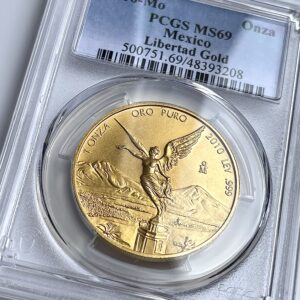
Mexico – 2010 – Libertad – Gold coin 1 oz – PCGS MS69
3.150,00 €plus shippingDelivery Time: approx. 2-3 days (excluding Saturdays, Sundays and public holidays) -
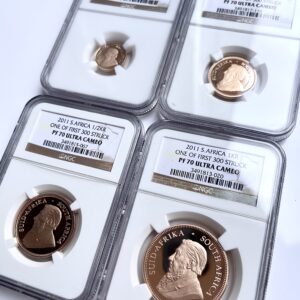
Krugerrand – 2011 – Set – One of First 300 – 4 Gold Coins Proof – NGC PF70 UCAM
5.500,00 €plus shippingDelivery Time: approx. 2-3 days (excluding Saturdays, Sundays and public holidays) -
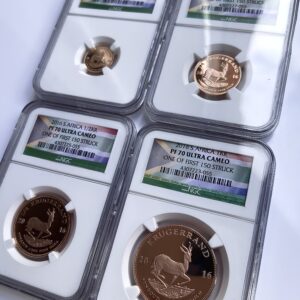
Krugerrand – 2016 – Set – One of First 150 – 4 Gold Coins Proof – NGC PF70 UCAM
5.500,00 €plus shippingDelivery Time: approx. 2-3 days (excluding Saturdays, Sundays and public holidays) -
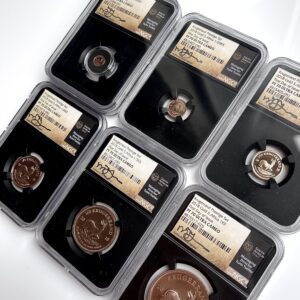
Krugerrand – 2018 – Set – First Day of Issue – 6 Gold Coins Proof – NGC PF70 UCAM
5.750,00 €plus shippingDelivery Time: approx. 2-3 days (excluding Saturdays, Sundays and public holidays) -
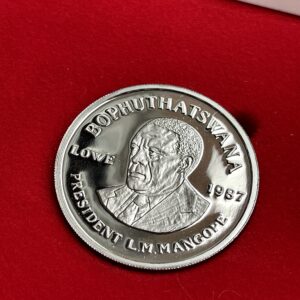
Bophuthatswana – 1987 – 10 years of independence – platinum – 1oz – with original case and certificate
2.195,00 €plus shippingDelivery Time: approx. 2-3 days (excluding Saturdays, Sundays and public holidays) -
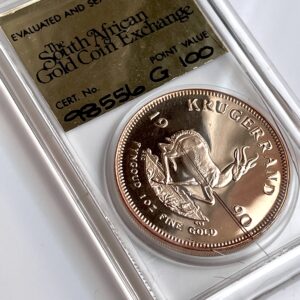
South Africa – Krugerrand – GRC – 1990 – SAGCE PoV 100 – 1oz Proof Gold
3.250,00 €plus shippingDelivery Time: approx. 2-3 days (excluding Saturdays, Sundays and public holidays) -
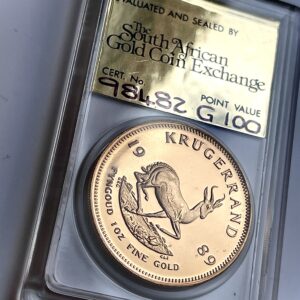
South Africa – Krugerrand – GRC – 1989 – SAGCE PoV 100 – 1oz Proof Gold
3.250,00 €plus shippingDelivery Time: approx. 2-3 days (excluding Saturdays, Sundays and public holidays) -
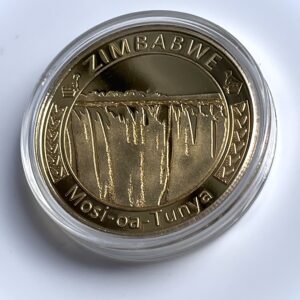
Zimbabwe – 2022 – Mosi-oa-Tunya – 1oz Proof Gold
3.150,00 €plus shippingDelivery Time: approx. 2-3 days (excluding Saturdays, Sundays and public holidays)

